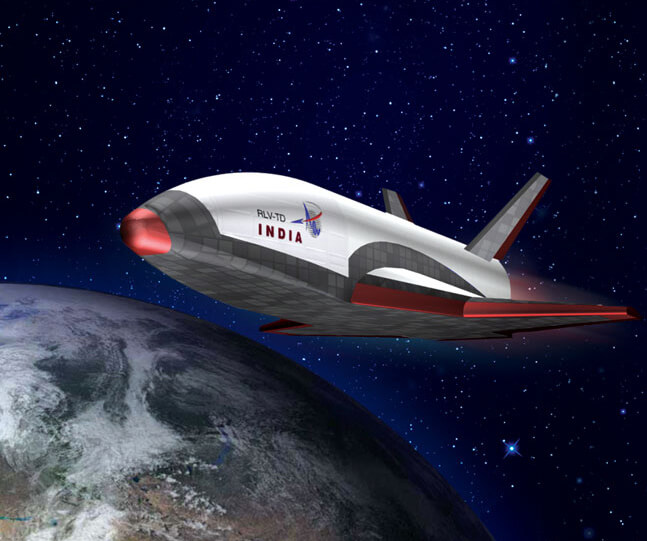
2026-2031
India’s reusable launch vehicle is operational
During this period, a two-stage-to-orbit (TSTO) reusable launch vehicle is developed by the Indian Space Research Organisation (ISRO). This follows successful testing of smaller, scaled-down versions, which demonstrated important technologies such as autonomous navigation, guidance and control, hypersonic and scramjet flight, a reusable thermal protection system, and re-entry mission management.
An early prototype in 2016 achieved a speed of Mach 5 and maximum altitude of 40 miles (65 km)* – not quite enough to reach outer space, which is generally considered to begin at a height of 62 miles (100 km). It lasted for 13 minutes and covered a distance of 280 miles (450 km), steering itself to an on-target splashdown to land (ditch) in the Bay of Bengal. Not designed to float, the vehicle disintegrated on impact and was not recovered. Known as the Hypersonic Flight Experiment (HEX) this was the first in a series of five tests. The four subsequent iterations were more advanced and enabled landing, return flights and scramjet propulsion experiments. These would eventually culminate in the finalised version, able to transport cargo into orbit, return safely to Earth and be re-used.*
India had already launched astronauts into space by 2023, in a small capsule atop a GSLV rocket. The addition of a reusable launch system greatly expands ISRO’s capabilities in space – enabling longer, more complex and commercially successful missions, while cutting launch costs by a factor of ten. This comes at a time when various new space planes are being developed by other countries and space agencies, making access to space increasingly affordable and routine.

Credit: ISRO
2026-2030
The PLATO observatory is operational
PLAnetary Transits and Oscillations of stars (PLATO) was selected as the third medium-sized (M) mission in the European Space Agency’s Cosmic Vision programme (the others being “Solar Orbiter” launched in 2017 and the Euclid Space Telescope launched in 2022). This observatory would include a payload of 34 separate telescopes and cameras, each comprised of four CCDs at 4500 x 4500 pixels resolution. It would scan up to a million stars, looking for truly Earth-like planets in sufficient detail to examine their atmospheres for signs of life.* In operation from 2026 until 2030,* at Earth-Sun Lagrangian point L2, the mission has the following objectives:
• Discover and characterise a large number of close-by exoplanetary systems, with a precision in the determination of the planet mass up to 10%, of planet radius of up to 2%, and of stellar age up to 10%.
• Detect Earth-sized planets in the habitable zone around solar-type stars
• Detect super-Earths in the habitable zone around solar-type stars
• Measure solar oscillations in the host stars of exoplanets
• Measure oscillations of classical pulsators
PLATO is aided by data from the Gaia mission launched in 2013, which provides many useful targets for subsequent follow-up observations.
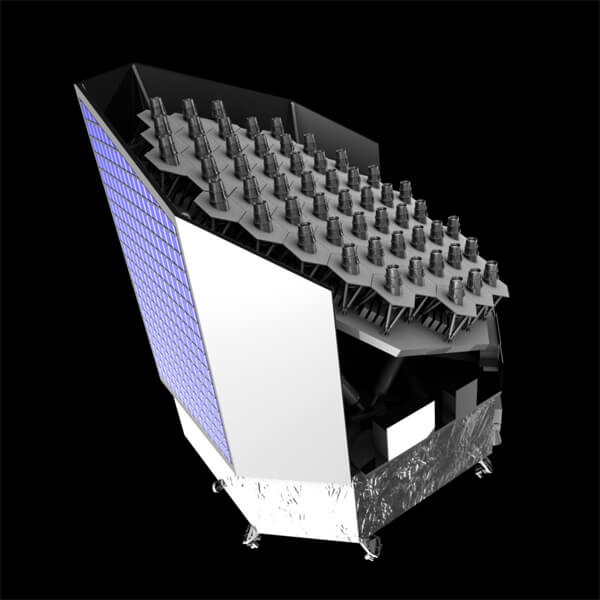
Credit: ESA
2026
NASA’s Psyche spacecraft makes orbital insertion
On 31st January 2026, a probe called Psyche enters orbit around the large metallic asteroid known as 16 Psyche.* One of the most massive objects in the main asteroid belt – and the heaviest known M-type asteroid – 16 Psyche is over 200 km (120 mi) in diameter and contains about 1% of the mass of the entire belt.
Psyche is an orbiter mission developed as part of NASA’s Discovery Program. Its primary objective is to explore the origin of planetary cores and confirm whether 16 Psyche is the exposed iron core of a protoplanet, the remnant of a violent collision with another object that stripped off its outer crust.
The spacecraft is launched in July 2022 aboard a SpaceX Falcon Heavy launch vehicle, with a Mars gravity assist at 500 km (310 mi) altitude in May 2023 before reaching its destination two and a half years later. It performs a comprehensive study of the asteroid’s geology, shape, surface features, elemental composition, gravity, magnetism and mass distribution – helping to increase the understanding of planetary formation and interiors. This information is also of potential use in future asteroid mining operations. The mission duration is 21 months, lasting until the final quarter of 2027, with a series of gradually decreasing orbits taking it closer and closer to 16 Psyche. The initial orbit starts at 700 km (435 mi) distance, while the final orbit is at 85 km (53 mi).
In addition to its study of 16 Psyche, the spacecraft also tests an experimental laser communication technology called Deep Space Optical Communications – designed to increase spacecraft communications performance and efficiency by 10 to 100 times over conventional means. The laser beams from the spacecraft are received by a ground telescope at Palomar Observatory in California.
A synthetic human genome is completed
In May 2010, scientists created the first artificial lifeform. Mycoplasma laboratorium was a new species of bacterium, with man-made genetic code originating on a computer and placed on a synthetic chromosome inside an empty cell. Using its new “software”, the cell could generate proteins and produce new cells.
In March 2016, the same research institute in the U.S. announced the creation of a minimal bacterial genome, known as JCVI-syn3.0, containing only the genes necessary for life, and consisting of 473 genes.*
A few months later, in June 2016, scientists formally announced “Human Genome Project – Write” (also known as HGP-Write), a ten year extension of the Human Genome Project, to create a synthetic human genome. The original project – completed in 2003 – was the largest ever collaboration in biology and involved hundreds of laboratories, taking 13 years of work. It led to major developments in genomic-based discovery, diagnostics, and therapeutics. Whereas the original project (HGP-Read) was intended to “read” DNA to understand its code, the HGP-Write project would use the cellular machinery provided by nature to “write” new code, producing vast DNA chains.*
The bacterial genome created in 2016 had 531,000 DNA base pairs and 473 genes. By contrast, the HGP-Write project would be orders of magnitude larger and more complex, with three billion base pairs and 20,000 genes. However, the earlier work on bacterial genomes had paved the way for new tools and semi-automated processes for whole genome synthesis. HGP-Write would cut the costs of engineering and testing large genomes in cell lines by more than 1,000-fold within ten years. Alongside this, an ethical framework for biological engineering was being developed.
Longer term, the project would lead to transformative applications. Previously, the capability to construct DNA sequences in cells was mostly limited to a small number of short segments, restricting the ability to manipulate and understand biological systems. After the completion of HGP-Write, the ability to synthesise large portions of the human genome leads to major advances – in medicine, agriculture, energy and other areas – by connecting the sequence of bases in DNA with their physiological and functional behaviours. Some health applications that arise from HGP-write include the growing of transplantable human organs, engineering of immunity to viruses in cell lines, engineering cancer resistance in cell lines, and enabling high-productivity vaccines at low cost.
HGP-Write involves taking synthetically constructed DNA to produce a human genome able to power a single cell in a dish. In the more distant future, however, this area of biology advances to the point where entire synthetic people can be designed from scratch – new custom-made “super humans” able to resist all disease infections, or made immune to the radiation and vacuum in space, for example. This leads to profound ethical questions about the nature of life.*
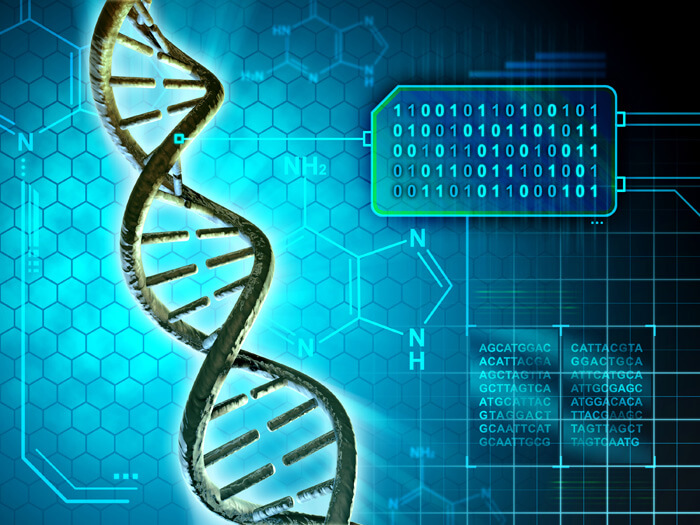
The High Luminosity Large Hadron Collider (HL-LHC) is operational
The High Luminosity Large Hadron Collider (HL-LHC) is a major upgrade of the Large Hadron Collider (LHC) that is completed by 2026.* This new design boosts the machine’s luminosity by a factor of between five and seven, allowing 10 times more data to be accumulated, providing a better chance to see rare processes and improving statistically marginal measurements.
Luminosity is a way of measuring the performance of an accelerator: it is proportional to the number of collisions that occur in a given amount of time. The higher the luminosity, the more data that can be gathered during an experiment. The HL-LHC can perform detailed studies of the new particles observed at the LHC, such as the Higgs boson. It enables the observation of rare processes that were inaccessible at the previous sensitivity levels. More than 15 million Higgs bosons can be produced each year, for example, compared to the 1.2 million produced in 2011-2012.
The development of the HL-LHC depends on several technological innovations that are exceptionally challenging to researchers – such as cutting-edge Tesla superconducting magnets, very compact and ultra-precise superconducting cavities for beam rotation, and 300-metre-long high-power superconducting links with zero energy dissipation. Together, these upgrades help to advance and further refine the knowledge already gained from the Higgs boson and provide fresh insights into so-called “New Physics”, a more fundamental and general theory than that of the Standard Model.*
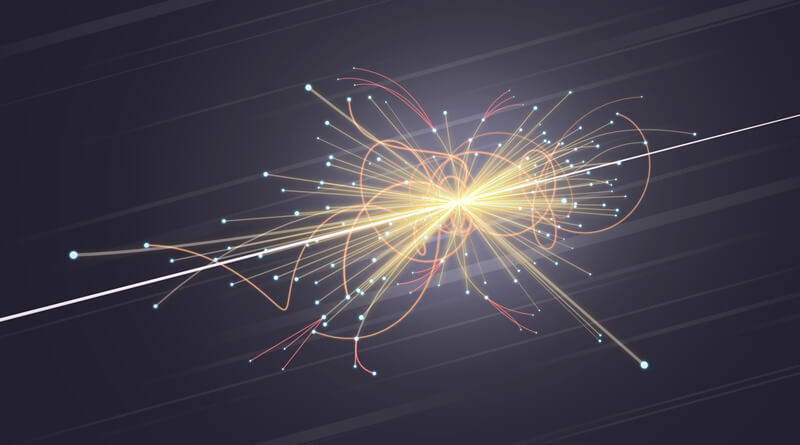
The International Linear Collider is completed
This project is the culmination of more than 25 years of concerted international efforts, with funding and research from Europe, Asia and the Americas. Over 300 universities and laboratories have taken part. It originated as a series of three separate collider proposals – the Next Linear Collider (NLC), the Global Linear Collider (GLC) and the Teraelectronvolt Energy Superconducting Linear Accelerator (TESLA) – all of which were combined into the International Linear Collider (ILC).*
Located in Europe, the ILC is the successor to the Large Hadron Collider (LHC), building upon the work already done by that machine. Although its collisions are less powerful, it offers far more precise measurements. It also gives off less electromagnetic radiation. The ILC consists of two opposite-facing linear accelerators, together stretching 31 km (19.3 miles), that hurl particles and anti-particles towards each other at close to the speed of light.* Along with the linear accelerators, the facility contains two dampening rings, with a circumference of 6.7 km (4.2 miles). Energy levels of the collisions are initially 500 billion-electron-volts (GeV), but are soon upgraded to a trillion-electron-volts (TeV).
The extreme precision and exact recordings offered by the ILC help to reveal some of the deepest mysteries of the universe. Some experiments are concerned with extra-dimensional physics and supersymmetric particles, while others provide research into dark matter.* Originally planned for completion in 2019, the ILC faced considerable delays due to funding, technical issues and international agreements. It is finally ready by 2026.*
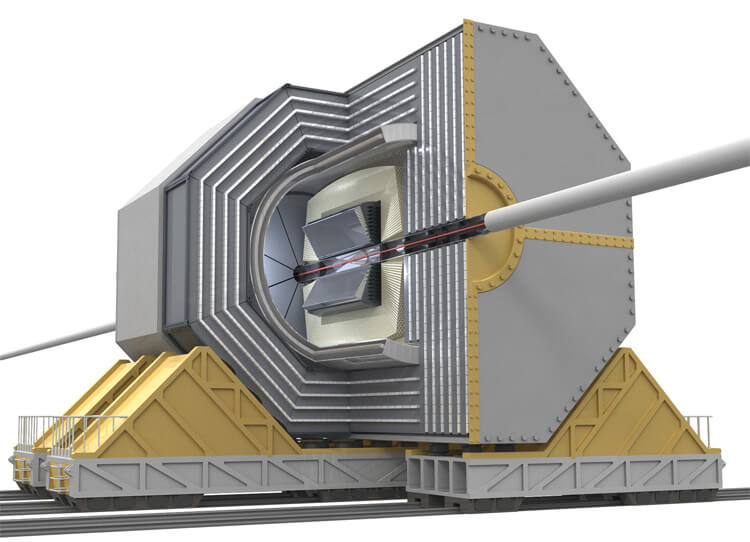
3-D printed electronic membranes to prevent heart attacks
Following years of clinical trials* – initially in rabbits and later in humans – a new device is available that can dramatically improve the monitoring and treatment of cardiac disorders. This consists of an ultra-thin membrane, specially customised and 3-D printed to exactly match the patient’s heart shape. Tiny sensors embedded in a grid of flexible electronics measure pulse, temperature, mechanical strain and pH level with far greater accuracy and detail than was possible using previous methods. Doctors can determine the heart’s overall health in real-time and predict an impending heart attack before a patient has any physical signs – intervening when necessary to provide therapy. The device itself can deliver a pulse of electricity in cases of arrhythmia.
This electronic membrane can be installed in a relatively non-invasive procedure, by inserting a catheter into a vein beneath the ribs and then opening the mesh like an umbrella. At present, it is restricted to the exterior surface of the heart. However, new and more advanced versions are now being developed that will go directly inside the heart to treat a variety of disorders – including atrial fibrillation, which affects 2.5 million U.S. adults and 4.5 million people living in the EU, accounts for one-third of hospitalisations for cardiac rhythm disturbances and is a major risk factor for stroke.
Great progress is now being made in the monitoring, diagnosis and treatment of heart disorders, thanks to this and other breakthroughs emerging at this time, all of which are contributing to a rapid decline in mortality rates. By the 2040s, deaths from cardiovascular disease will reach negligible levels in some nations.*
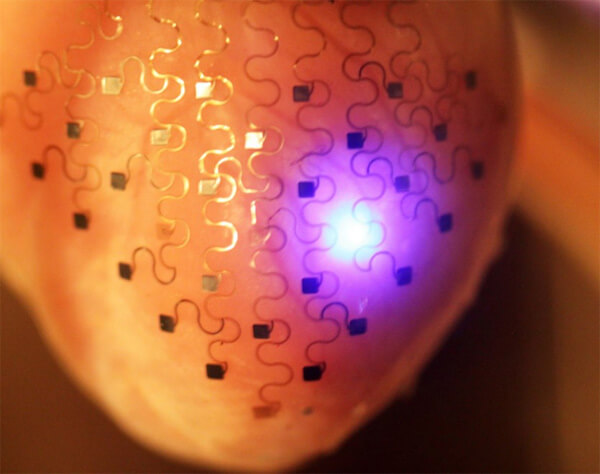
Credit: Rogers et al, University of Illinois at Urbana-Champaign.
Youthful regeneration of aging heart muscle via GDF-11
In the previous decade, researchers identified an obscure blood protein called GDF-11. This was shown to have regenerative properties upon the cardiac muscle in age-related diastolic heart failure. The substance was found to be present at high levels in youth, and lower levels in old age. When elderly mice were supplemented with increased GDF-11, it had a dramatic effect on their hearts – restoring heart size and muscle wall thickness to a much earlier state.
This offered a potential way of treating heart failure and aging in people. A series of clinical trials, beginning in the late 2010s,* confirmed this. By 2026,* it’s becoming fairly routine for doctors to repair cardiac damage and restore human hearts to earlier states, based on the GDF-11 protein. Along with stem cells and other advances this decade, science is gradually chipping away at the factors which cause people to die.
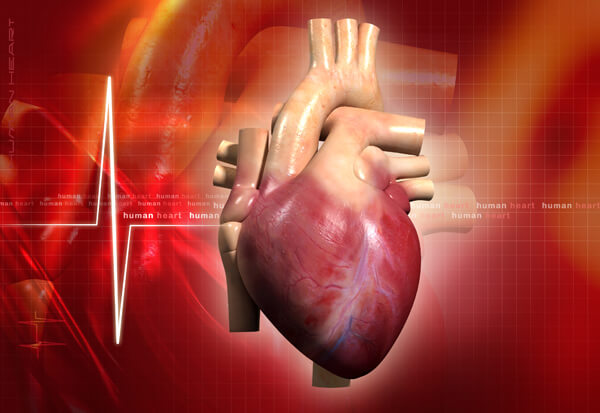
New
treatments for Alzheimer’s disease
Alzheimer’s
is the most common form of dementia. This incurable, degenerative and
terminal disease affects over 27m people worldwide, mostly aged over
65. The most common symptom is the inability to acquire new memories
and difficulty in recalling recently observed facts. As the disease
advances, further symptoms include confusion, irritability and aggression,
mood swings, language breakdown, long-term memory loss, and the general
withdrawal of the sufferer as their senses decline. Bodily functions
are gradually lost, ultimately leading to death.
Until recently,
the precise mechanisms behind the illness were poorly understood. In
2011, however, genes were identified that played a key role in biological
pathways such as inflammation, cholesterol and cell transport systems.
These provided new targets for potential treatments in the form of drugs,
behavioral changes and other therapies. New ways of delivering drugs
to the brain were also found, such as using the body’s own exosomes
as carriers.* After 15 years of research
and clinical trials, the risk of developing the disease has now been
*
With a
better roadmap to guide progress with the remaining genes and biological
processes, there is now real hope of actually curing the disease in
the 2030s.

© Scott
Griessel | Dreamstime.com
Russia debuts its first reusable rocket
In the late 20th century, NASA developed the first reusable launch vehicle to reach orbit – the Space Shuttle. However, this failed to accomplish the intended goal of reducing launch costs to below those of expendable launch systems.
During the early 21st century, commercial interest in reusable launch systems grew considerably, with several active launchers. SpaceX’s Falcon 9 rocket featured a reusable first stage and capsule, while Virgin Galactic flew reusable suborbital spaceplanes, and the suborbital Blue Origin New Shepard rocket had recoverable first stages and crew capsules.
Eager to join this race and become more competitive, Russian space agency Roscosmos announced in 2020 that it would develop a preliminary design for the Amur-SPG, its first rocket with reusable capability.
The maiden flight of the Amur occurs in 2026* at Vostochny Cosmodrome in part of eastern Russia known as the Amur region (hence its name). It bears a striking resemblance to the Falcon 9 – such as the stabilising grid fins on the rocket’s first stage, and the intended technical specification of reusing each booster up to 100 times.*
However, the Amur is smaller and less powerful than the Falcon 9, standing only 55 m (180 ft) tall, and with a capacity of 10.5 metric tons to low-Earth orbit (LEO). By contrast, the Falcon 9 is 70 m (230 ft) tall and can lift 22.8 metric tons to LEO.
The total cost of developing the Amur-SPG system is 70 billion rubles (about US$900 million), with a per-launch cost of $22 million. This is cheaper than both a brand new ($60m) and reused ($50m) Falcon 9, albeit with a smaller payload. Landing platforms are installed on the coast of the Sea of Okhotsk (north of Japan) with vertical, powered landings of the second stage followed by collection and return to the cosmodrome, either by a heavy Mi26 transport helicopter or by rail.
The Amur-SPG’s relatively small size and payload makes it limited to niche markets, at least initially. However, a larger and more advanced derivative emerges in the 2030s with greater economy of scale, and full reusability for both stages. Combined with additional new rockets being developed by other space agencies and private companies, this contributes to an ongoing decline in launch costs to low Earth orbit.
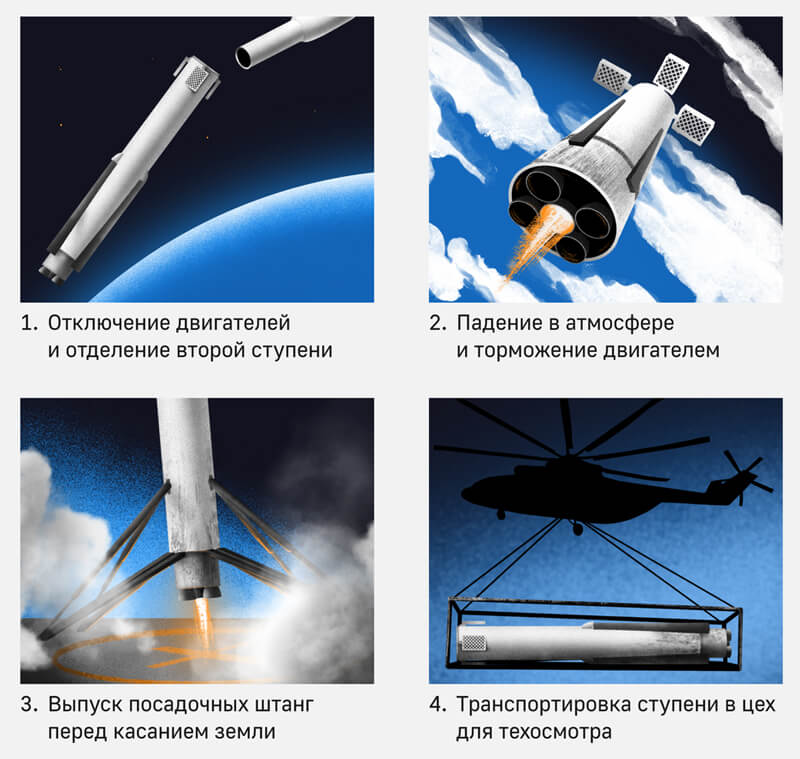
Credit: Roscosmos
Global reserves of indium are running out
Indium is a rare, soft and malleable post-transition metal, found primarily in zinc ore. It is mined almost exclusively in Canada, China, the US and Russia. Indium is used in various electronic applications such as LCDs and touchscreens, solar cells, LEDs and various batteries. It is also useful in making alloys, medical imaging, and in the control rods of nuclear reactors. Its role in electronic screens drives most of the production demand, which by now has resulted in global reserves being almost completely exhausted.** Recycling is one option being pursued to solve this problem, but it will only suffice in the short term. Fortunately, new alternative materials are being introduced, derived from carbon nanotube compounds that can take on the role previously filled by indium.*
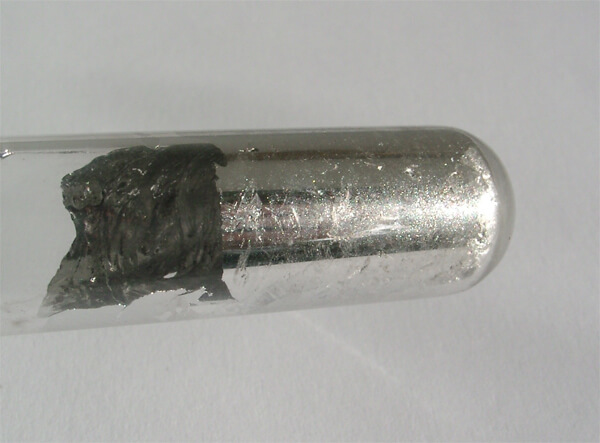
Italy hosts the Winter Olympics
The 2026 Winter Olympics take place from 6th February to 22nd February 2026, in the Italian cities of Milan and Cortina d’Ampezzo. Italy had beaten another joint bid from Swedish cities Stockholm–Åre, by 47–34 votes, at the 134th Session of the International Olympic Committee (IOC) held in Lausanne, Switzerland, on 24th June 2019. This marks the fourth time that the Olympic Games have been won by Italy, the first time they are hosted in Milan, and is also the first Olympic Games featuring two host cities in its name. It occurs on the 20th anniversary of the 2006 Winter Olympics in Turin and the 70th anniversary of the 1956 Winter Olympics in Cortina d’Ampezzo.

Construction
of the Sagrada Família is complete
The
Sagrada Família is a massive, privately-funded Roman Catholic
church that has been under construction in Barcelona since 1882. Considered
the masterwork of renowned Spanish architect Antoni Gaudí (1852–1926),
the project’s vast scale and idiosyncratic design have made it one of
Spain’s top tourist attractions, visited by millions of people each year. Construction
of the building is finally completed this year, the 100th anniversary of Gaudí’s death.*
https://www.youtube.com/watch?v=RcDmloG3tXU
Robotic hands matching human capabilities
As part of the on-going rise of consumer-level robotics, recent research in artificial intelligence and bio-inspired devices has reached a new plateau of possibilities. Modern robots are now able to fill an increasingly broad scope of roles in both home and work environments.* Easily one of the most important (and difficult) abilities for such machines is being able to recognise and interact with various physical objects. For simple or repetitive tasks, such as assembly line production, this knowledge was relatively straightforward, requiring simple programming and mechanical systems. However, the growing complexity of environments that commercial robots now have to encounter has driven research into more intricate and capable mechanisms.
As has often been the case, engineers turned to the human body itself to model both the form and function of new robot apparatuses. Since almost all robots must interact with and handle physical objects in some way, among the most commonly emulated body parts is the hand. Along with their associated computer programs and visual recognition software, robotic hands in the 2000s and 2010s had already boasted some impressive abilities. They could pick up delicate objects,* catch objects thrown to them,* make a range of gestures,* fold towels,* pour drinks and even prepare meals.* Despite this, the sheer dexterity and flexibility of the human hand and the practical limits of mechanical components prevented scientists from achieving a perfect recreation.
By the second half of the 2020s, however, the techniques involved have become sufficiently advanced to overcome most of the obstacles faced in previous decades. Around this time, some of the first robot hands equalling the capabilities of human hands are appearing in the laboratory.* Advances in nanotechnology,* miniaturisation and micro-electronics have allowed engineers to account for almost all of the subtle movements performed by a living biological hand. Graphene-based actuators converting electricity into motion, artificial skin, tactile sensors,* flexible electronics and various other features are employed to emulate the real thing. This has also been the result of an improved biological understanding of how humans manipulate objects.
AI programs, using precise visual perception software, are able to recognise countless physical objects and intelligently plan for how they can be manipulated. The robotic hand is therefore able to function autonomously and self-adjust to different objects based on texture, weight and shape. All of this can be accomplished in fluid, natural movements that are largely indistinguishable from those of a real hand. Though still in the trial stage, such systems will prove extremely useful in the development of human-like robots and androids. By the following decade, the subtle capabilities offered by robotic hands will allow machines to interact with humans and their environment in myriad new ways.*
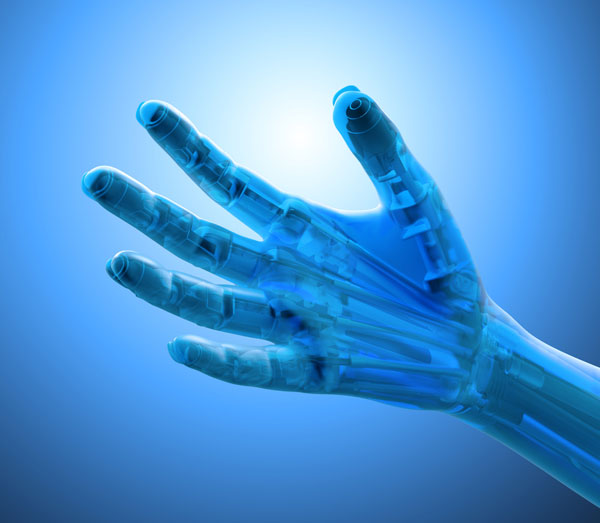
The FIFA World Cup is hosted jointly in Canada, Mexico and the United States
The 23rd FIFA World Cup, held in the summer of 2026, is the first tournament hosted by more than two countries. It takes place in Canada, Mexico and the United States, who won the rights to host the contest at the FIFA Congress in Moscow on 13th June 2018, beating a rival bid from Morocco. The 2026 tournament is the biggest World Cup ever held, after FIFA approved an expansion from 32 teams to 48. A total of 80 matches are played – 60 in the US (including all eight matches from the quarter-finals onward), while Canada and Mexico host 10 matches each. The final takes place at the 85,000-capacity MetLife Stadium in East Rutherford, New Jersey.*

United States Semiquincentennial
4th July 2026 is the 250th anniversary of the United States Declaration of Independence in 1776. Festivities are scheduled to mark various events leading up to the anniversary date.
In 2016, Congress established the U.S. Semiquincentennial Commission, to encourage Americans to remember the past, celebrate the present, and look forward to a promising future. It aimed to orchestrate “the largest and most inclusive celebration in [the United States’] history.”
The America250 Foundation, a non-profit partner of the Semiquincentennial Commission, launched a website to invite people – especially younger Americans who may not have access to traditional channels like voting or legislation – to share their vision for the next 250 years.*
As part of the anniversary, the government issues commemorative coins and postage stamps, including a series of five designs for the quarter – one of which depicts women’s contributions to independence. Appropriately named naval vessels are also commissioned, while renovations and overhauls are carried out on various old buildings.
Events are held in locations of historical importance, with a focus on Boston, Charleston in South Carolina, New York, and Philadelphia. Battle re-enactments are performed in South Carolina, while a time capsule is buried in Philadelphia with its unearthing scheduled for 4th July 2276. The Semiquincentennial follows the Bicentennial of 1976 and is, itself, followed by the Tricentennial of 4th July 2076.
Mars Science Laboratory is shutting down
This 900 kg (2,000 lb), six-wheeled rover has been transmitting back to Earth since 6th August 2012, the day it touched down on Mars.* Although its planned mission duration was around two years, it continued to be operational for considerably longer, like the previous rovers, Spirit and Opportunity. In fact, its onboard plutonium generators carried enough heat and electricity to last 14 years. By 2026 the machine is finally grinding to a halt. The last signal is received from the rover this year.*
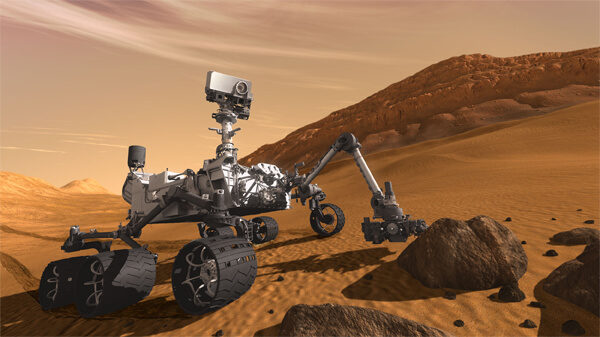
The first uncrewed exploration of a lunar lava tube
In 2026, British company Spacebit conducts the third in a series of missions to the Moon using Asagumo robots. These walking, spider-like machines had previously been deployed to gather data on the presence of ancient lava tubes. With a suitable site having been identified, this latest study involves the robots actually venturing inside a tunnel. Here, they make detailed 3D scans of a cave entrance and portions of the interior wall. The data is relayed back to Earth via an accompanying “mothership” rover. In addition to providing scientific evidence about past volcanic activity, lunar crust composition, and stratification that occurred in the Moon’s deep interior, the knowledge gained is of use in planning future human colonies.
50TB hard drives
During the 2010s, solid state drives (SSDs) became the preferred choice for running computer operating systems and applications, due to their much greater speed than traditional spinning hard drives. However, the latter still had a role to play in archiving/backups and general storage. As such, they did not disappear and continued to form a part of computing ecosystems. Ongoing research and development led to huge capacities, with 20 terabytes (TB) emerging by the start of the next decade, based on shingled magnetic recording (SMR) technology.
An even greater innovation – heat assisted magnetic recording (HAMR) – boosted capacities still further. This technology involved tiny spots on the drive platter being heated to 450°C (842°F) and then cooled back down to room temperature in less than a nanosecond.* During this process, the spots would become more receptive to magnetic effects, allowing data to be written to much smaller spaces than with conventional magnetic recording (CMR). Additionally, new drives with multiple actuators enabled the vast volumes of data to be read at speeds matching or exceeding current HDDs, making them practical for everyday use.
Initially starting with around 20TB, these new HAMR drives quickly expanded in capacity over the next several years, reaching 50TB by 2026.* Although the gap is closing in terms of worldwide byte shipments, conventional hard drives continue to lead over SSDs for some time to come, thanks to their affordability and greater capacities. The global “datasphere”, or the amount of digital data worldwide, has increased from 33 zettabytes in 2018 to over 200 zettabytes by 2026 and continues to grow exponentially.*
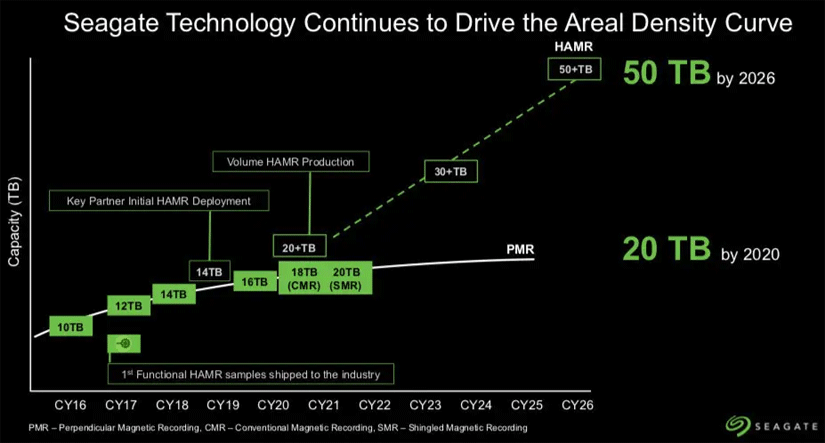
References
1 RLV-TD, ISRO:
https://www.isro.gov.in/launcher/rlv-td
Accessed 22nd February 2018.
2 Article from 2016: “[The] final version is expected to take 10 to 15 years.”
See ISRO successfully launches India’s first-ever indigenous space shuttle, The Times of India:
http://economictimes.indiatimes.com/news/science/isro-successfully-launches-indias-first-ever-indigenous-space-shuttle/articleshow/52393846.cms
Accessed 9th July 2016.
3 European Space Agency picks Plato planet-hunting mission, BBC:
http://www.bbc.co.uk/news/science-environment-26267918
Accessed 20th February 2014.
4 PLATO spacecraft to find new Earth-like exoplanets, PhysOrg:
https://phys.org/news/2017-06-plato-spacecraft-earth-like-exoplanets.html
Accessed 26th May 2018.
5 Psyche Asteroid Mission, NASA:
https://www.nasa.gov/psyche
Accessed 25th July 2020.
6 World’s first minimal synthetic bacterial cell, Future Timeline Blog:
https://www.futuretimeline.net/blog/2016/03/29.htm
Accessed 16th June 2016.
7 Introducing HGP-write: A Grand Challenge, The Center of Excellence for Engineering Biology:
http://engineeringbiologycenter.org/
Accessed 16th June 2016.
8 Plan to Fabricate a Genome Raises Questions on Designer Humans, MIT Technology Review:
https://www.technologyreview.com/s/601610/plan-to-fabricate-a-genome-raises-questions-on-designer-humans/
Accessed 16th June 2016.
9 Physicists build ultra-powerful accelerator magnet, Symmetry Magazine:
http://www.symmetrymagazine.org/article/physicists-build-ultra-powerful-accelerator-magnet
Accessed 5th July 2016.
10 High-Luminosity Large Hadron Collider, CERN:
https://indico.cern.ch/event/512424/attachments/1246970/1855907/HL_ESFRI_ROADMAP.2016.03.10.pdf
Accessed 5th July 2016.
11 International Linear Collider, Wikipedia:
http://en.wikipedia.org/wiki/International_Linear_Collider
12 The ILC in 2 minutes, ILC communication:
https://www.youtube.com/watch?v=40Ap98o-4tU
Accessed 22nd March 2014.
13 ILC – What is the ILC?, International Linear Collider official website:
http://www.linearcollider.org/about/What-is-the-ILC/The-project
Accessed 20th October 2011.
14 New 19-mile-long International Linear Collider will investigate the Higgs boson, dark energy, multiple dimensions, Extreme Tech:
http://www.extremetech.com/extreme/158480-new-19-mile-long-international-linear-collider
Accessed 22nd March 2014.
15 “If all goes well, a version for humans is expected in the next 10-15 years.”
See 3-D printed electronic membrane could prevent heart attacks, Future Timeline Blog:
https://www.futuretimeline.net/blog/2014/03/3.htm
Accessed 16th March 2014.
16 See 2041.
17 Clinical trials “could begin in four to five years.”
See Making old hearts younger, Harvard University:
http://news.harvard.edu/gazette/story/2013/05/making-old-hearts-younger/
Accessed 12th May 2013.
18 Clinical trials usually take around eight years to complete, i.e. 2013 + 5 + 8 = 2026.
See Frequently asked questions, The University of Arizona:
http://azcc.arizona.edu/patients/clinical-trials/faq
Accessed 12th May 2013.
19 Breakthrough
in delivering drugs to the brain, BBC:
http://www.bbc.co.uk/news/health-12776222
Accessed 6th April 2011.
20 Five
more Alzheimer’s genes discovered, scientists say, BBC:
http://www.bbc.co.uk/news/health-12937131
Accessed 6th April 2011.
21 Russian Design for a Reusable Rocket Sure Looks Familiar, Gizmodo:
https://www.gizmodo.com.au/2020/10/russian-design-for-a-reusable-rocket-sure-looks-familiar/
Accessed 20th October 2020.
22 Russia planning to go reusable in 2026 with new Amur rocket, Space.com:
https://www.space.com/russia-announces-reusable-rocket-amur
Accessed 20th October 2020.
23 This reference predicts 2024, while the next one predicts 2028. We have therefore used an average of the two, which is 2026.
Stock Check, BBC:
http://www.bbc.co.uk/bbc.com/future/BBCF_infoData_stock_check.pdf
Accessed 4th July 2012.
24 This reference predicts 2028, while the previous one predicts 2024. We have therefore used an average of the two, which is 2026.
How Much Is Left? The Limits of Earth’s Resources, Scientific American:
http://www.scientificamerican.com/article.cfm?id=how-much-is-left
Accessed 4th July 2012.
25 Researchers Find Replacement for Rare Material Indium Tin Oxide, ScienceNewsline:
http://www.sciencenewsline.com/articles/2011041213000057.html
Accessed 4th July 2012.
26 Sagrada
Família, Wikipedia:
http://en.wikipedia.org/wiki/Sagrada_Fam%C3%ADlia
Accessed 15th August 2010.
27 “Researchers predict that within 10 to 15 years, personal robots will become more commonplace, helping people keep their homes safe and perform household chores.”
Robots predicted to join family in home or serve in public setting, TribLive:
http://triblive.com/business/headlines/3234427-74/robots-robot-robotics
Accessed 17th February 2013.
28 Egg Pick Up, YouTube:
http://www.youtube.com/watch?v=Fm96p6ygBmc
Accessed 17th February 2013.
29 Disney teaches a humanoid robot to play catch and juggle balls, Future Timeline Blog:
https://www.futuretimeline.net/blog/2012/11/24-2.htm
Accessed 17th February 2013.
30 Robot hand is unbeatable against a human opponent, Future Timeline Blog:
https://www.futuretimeline.net/blog/2012/06/27.htm
Accessed 17th February 2013.
31 See 2010.
32 CIROS, the salad-making robot, Future Timeline Blog:
https://www.futuretimeline.net/blog/2012/11/3.htm
Accessed 17th February 2013.
33 Article from 2011: “It will take around 15 years of research into these areas to build a robotic hand that is able to perform certain complex tasks with a level of precision, autonomy and dexterity that is similar to that of a human hand,” predicts Professor Abderrahim.
See Scientists Developing Robotic Hand of the Future, Science Daily:
http://www.sciencedaily.com/releases/2011/06/110629083237.htm
Accessed 17th February 2013.
34 Thousands of nano-machines mimic human muscle, Future Timeline Blog:
https://www.futuretimeline.net/blog/2012/10/23.htm
Accessed 17th February 2013.
35 Robots that can touch and feel?, Future Timeline Blog:
https://www.futuretimeline.net/blog/2012/06/24.htm
Accessed 17th February 2013.
36 See 2034.
37 World Cup 2026: Canada, US & Mexico joint bid wins right to host tournament, BBC:
https://www.bbc.co.uk/sport/football/44464913
Accessed 13th June 2018.
38 What is your wish for America’s future?, My Wish For U.S.:
https://www.mywishforus.com/
Accessed 28th May 2022.
39 See 2012.
40 Nasa’s Curiosity rover on course for Mars landing, BBC:
http://www.bbc.co.uk/news/science-environment-19107577
Accessed 3rd August 2012.
41 HAMR | Creating the Future, YouTube:
https://www.youtube.com/watch?v=aUHAd36BDTc
Accessed 9th December 2019.
42 Seagate is planning 50TB drives for 2026, The Tech Report:
https://techreport.com/news/3466913/seagate-50tb-hard-drive-roadmap/
Accessed 9th December 2019.
43 Are Hard Drives DISAPPEARING?, YouTube:
https://www.youtube.com/watch?v=7Ue0J-4qxDM
Accessed 9th December 2019.